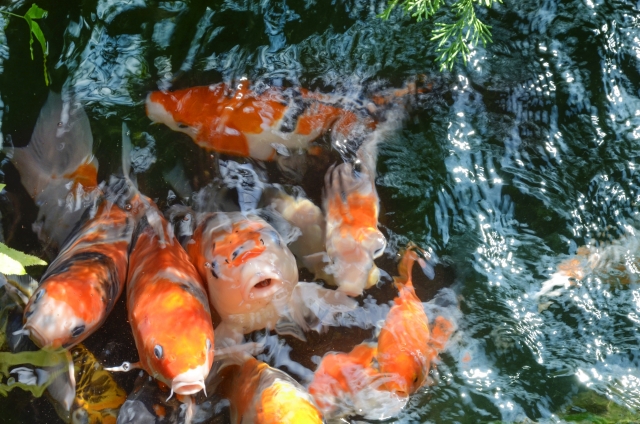In January, I paid a visit to The Kyoto University Museum and appreciated very interesting exhibits one by one and pondering and wondering various issues. Firstly went to a bit dim natural history section. Confronting with the ancient wild nature and the path human intelligence melting together, feel like I’m venturing the route. Amazed at the numbers of natural stones and took pictures.
一月に京都大学総合博物館へ行って、興味ぶかい展示品の数々をじっくりと見てまわり、いろんなことを考えた。まずは少し薄暗い自然史コーナーへ。太古の大自然を前に、人知が融合されて行く道を探索している気持ちになって来る。最初にあった天然石の種類の多さに息を飲み、夢中で写真を撮った。





Taking thousands of years beyond imagination, crystals were yielded and transformed into gems. And people are mesmerized at the stunning beauty, give polishing, exchange with a large sum of money, buy them, and cherish those accessories and furniture. There are mystery of nature, ancient time, and human inventive spirit. All of these are multiplied and we treasure them for something valuable.
何万年もの想像すら及ばない年月を経て結晶が作られて宝石になって行き、人はその言葉を呑むほどの美しさに魅了されて、加工を施し、大金を介して交換し、我がものにした装飾品や調度品を大切に愛でる。そこにあるのは、自然の神秘と悠久の時間と人間の工夫の精神で、この全てが掛け合わされたものを、人は価値の高いものとして珍重する。
At the same time, I was remembering verses form the Old Testament.
Exodus 39:8~14
They fashioned the breastpiece – the work of a skilled craftsman. They made it like the ephod: of gold, and of blue, purple and scarlet yarn, and of finely twisted linen. It was square – a span long and a span wide – and folded double. Then they mounted four rows of precious stones on it. In the first row there was a ruby, a topaz and a beryl; in the second row a turquoise, a sapphire and an emerald; in the third row a jacinth, an agate and an amethyst; in the fourth row a chrysolite, an onyx and a jasper. They were mounted in gold filigree settings. There were twelve stones, one for each of the names of the sons of Israel, each engraved like a seal with the name of one of the twelve tribes.
それと同時に、旧約聖書の箇所を思い出していた。
出エジプト記39:8~14
彼はまた、胸当てを巧みな細工で、エポデの細工と同じように、金色や青色、紫色、緋色の撚り糸、撚り糸で織った亜麻布で作った。四角形で二重にし、その胸当てを作った。長さ一あたり、幅一あたりで、二重であった。それに、四列の宝石をはめ込んだ。第一列は赤めのう、トパーズ、エメラルド。第二列はトルコ石、サファイヤ、ダイヤモンド。第三列はヒヤシンス石、めのう、紫水晶。第四列は緑柱石、しまめのう、碧玉。これらを金のわくに入れてはめ込んだ。これらの宝石は、イスラエルの子らの名によるもので、彼らの名にしたがい、十二個で、十二の部族のために印の彫り物が、一つの名につき一つずつあった。
Throughout the human history, The Bible gave myriads of inspirations for stories, and like solving the mysteries of The Bible, I go further and further into the intellectual world of the museum.
人類史上、数多の物語の着想の元となった聖書の謎解きをし、知的な奥深い世界へと迷い込んで行くように、博物館の中へ中へと進んで行く。
A fossil tusk of mammoth, stuffed specimen of a moon bear, a tanuki raccoon dog, and a small flying squirrel were displayed.
マンモスの牙の化石や、ツキノワグマの剥製、ニホンタヌキやニホンモモンガの剥製なども展示されてあった。




And think of a food chain, creature lives and dies, and sinful nature of human beings. Under the slogan of studies and development, we never feel guilty for killing other creatures. The strong drive to solve the mysteries of the world and the massive power. And the prosperity and the richness as a result. The side of dominant and the side of dominated. If one was asked which side to stand, without glossing, no one would hesitate to go to the side of dominant.
そして植物連鎖を考え、生物が生きて死ぬことを考え、人間の罪深い業について考える。研究と発展という名のもとに、数多の存在を殺めることを何んとも思わない私達の罪。世界の謎を解くために、わき目も振らずに邁進する私たち。そして、その結果手にした繁栄と豊かさ。支配する側とされる側、どちらに立ちたいかと問われれば、綺麗事なしで言えば、それは支配する側に決まっているのだろう。


And think of human history, territorial conflicts among countries, robbing of richness, and never ending wars and wars. And from the bloody lessons, we learned to co-live and co-thrive peacefully, then struggled painstakingly to light torch of hope for the future. I was thinking about the path. Becoming a bit gloomy and walking, then encouraged at the photo exhibitions entitled “Motive Power of Studies That Changed the World”
そして人類の歴史を思う。国と国との領土争い、富の奪い合い、そして決して終わることの無かった数々の戦争。その血みどろの歴史から学んだ教訓として、平和的に共栄共存しようと、知恵を出し合ってきた人類の必死のもがきを思う。それでも希望の灯火をもたらしたいと、懸命に励んできた私たちの軌跡を思う。暗い気持ちになっていた時に辿り着いた写真展示に励まされた。




Yes, I also carry on this blog project in order to plant a seed in the world. And I’m not alone. With myriads of people all over the world who struggle hard to contribute at their own positions, I’m connecting deep in the subconscious. Light and shadows, something beautiful and ugly, all these elements make human. Not denying something bad, but wrapping everything and healing one another, we can do so. I do want to believe so.
そうだ、私はこの世界に一粒の種を蒔きたくて、このブログ活動をしているのだ。そして私は決して一人じゃないのだ。世界中の多くの人たちと、持ち場持ち場で懸命に汗を流す人たちと、潜在意識の奥で繋がっているのだ。光も影も、美しいものも醜い姿も、その全てが人間を構成するものなのだ。悪しきものを否定するのではなく、その全てを包んで癒し合うことが、人間には出来ると信じたい。
From the natural history corner to culture history corner. Old maps of 17th and 18th Kyoto city were interesting. The city of Kyoto is in grid pattern, so walking along by reading a map and thinking about the direction in mind is so fun. Just walking in the city is filling my intellectual curiosity. And when this rejoicing intellectual curiosity and something good unite one another, the fruit of efforts will attain something magnificent. I notice it vaguely.
自然史コーナーから文化史コーナーへ。京都の街の古い17世紀や18世紀の地図が面白かった。京都の街は碁盤の目になっていて、地図を見たり、頭の中で方角の見当をつけて歩くのがとても楽しい。街歩きをしているだけで、知的好奇心が満たされて行く。そしてこの心喜ぶ知的好奇心が何か良きものと結びつく時に、きっと大きな成果が生まれるのだろうと薄々感づいてもいる。


Exhibits of clay image of haniwa.
古墳や埴輪の展示もあった。


Ancient potteries from the continent crossing the ocean.
大陸から海を渡って運ばれてきた陶器の置物たち。

Walking in the museum thinking about the 12 gems from the Old Testament. Thinking about human sinful nature, karma, and the attitude seeking for studies and development, and the society that is already developed in an even very scary way. But no matter how the science and the technology developed, the mind of human beings haven’t changed a bit from the times of the Old Testament. And, it is the eternal truth that written in The Bible, “Love remains until the last and Love is the greatest.”
旧約聖書の中に出てくる十二の宝石のことを、ずっと考えながら館内を歩いていた。人間の宿痾について、業について、それでも研究を続け発展を追い求める姿について、もう怖いほどに発展し尽くしている社会について。けれどどんなに科学が発展したとしても、人間の心は旧約の時代と一つも変わらない。きっと本当に聖書に書かれている通り、いつまでも残り、一番優れているものは愛なのだろう、と。
Love and Peace.
↓↓↓Click here for more information.
京都大学総合博物館
The Kyoto University Museum






















